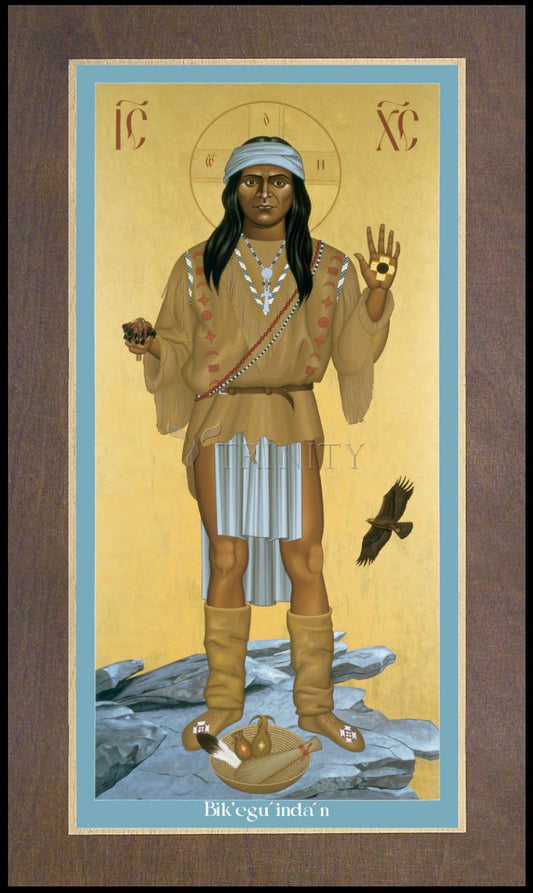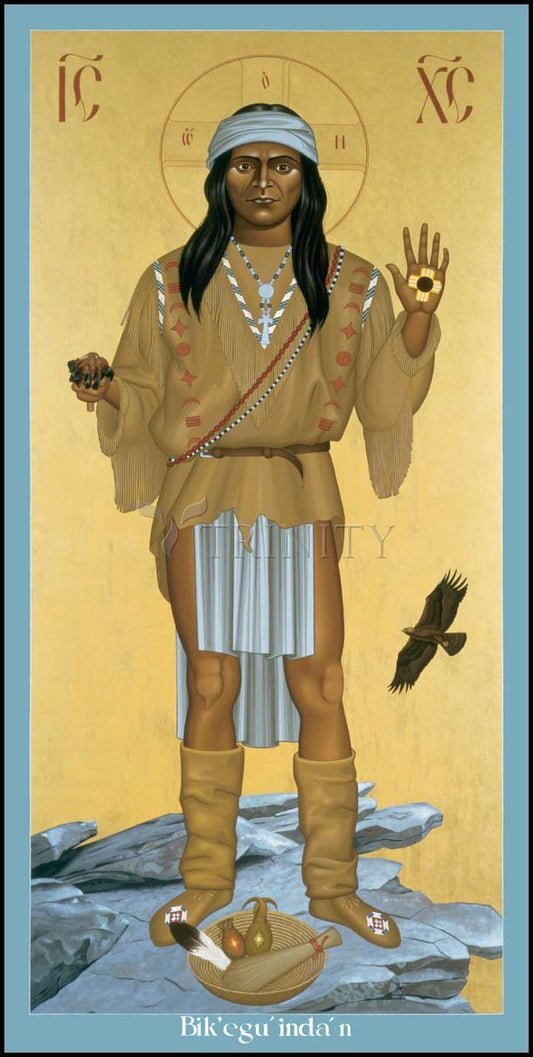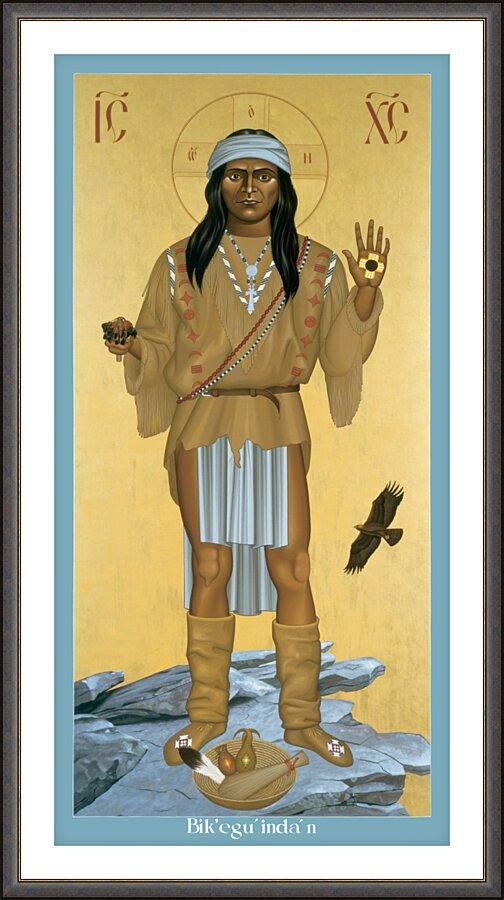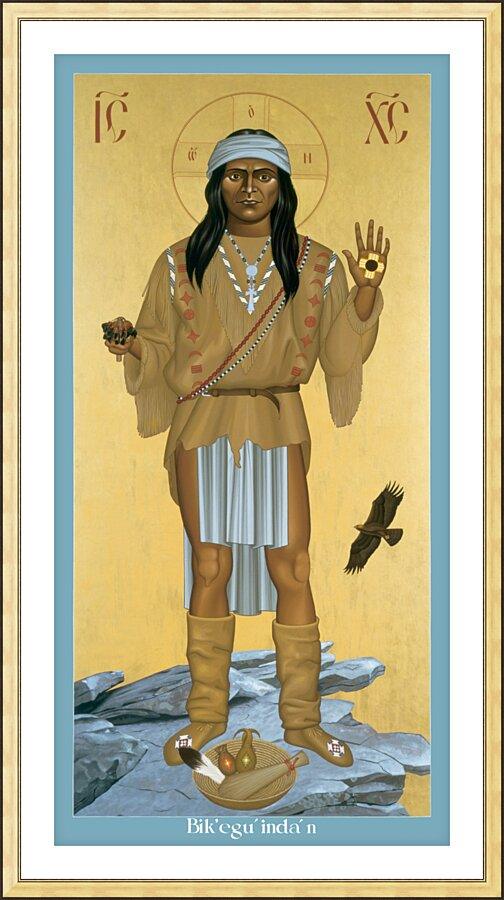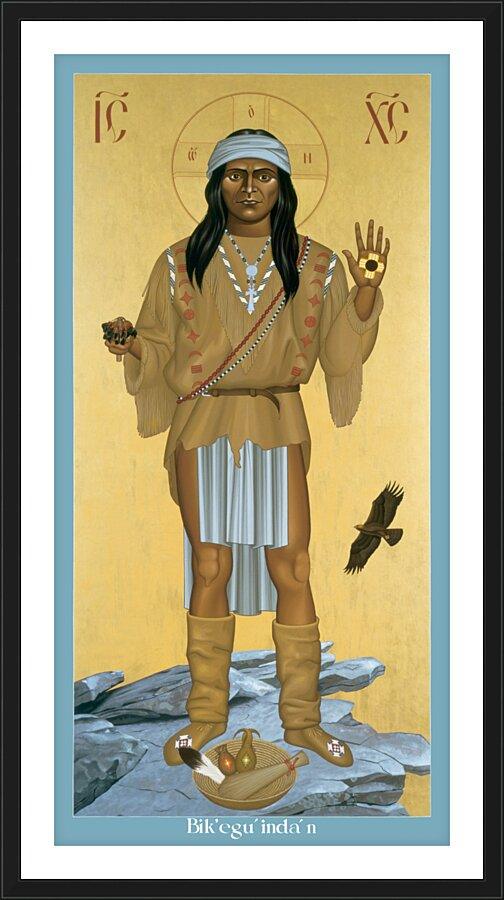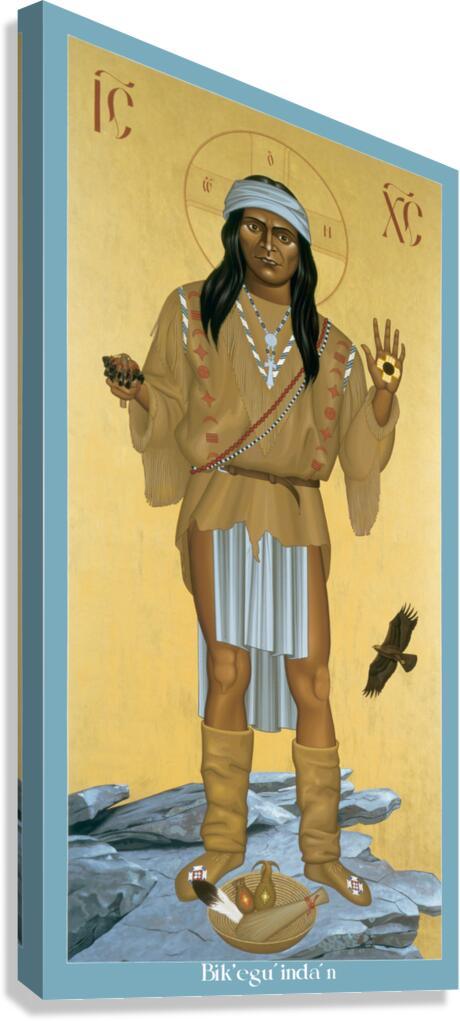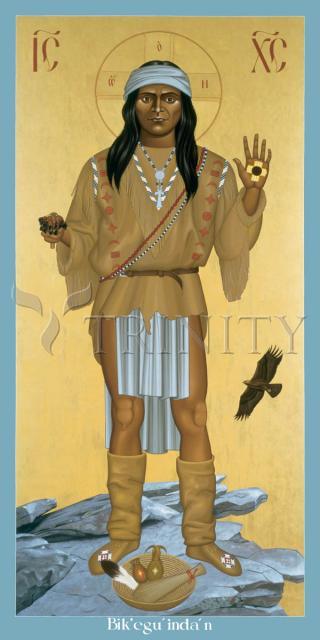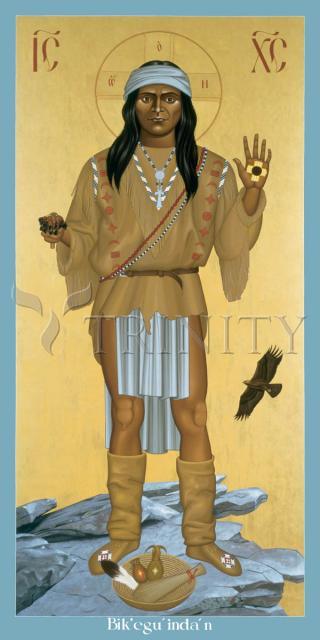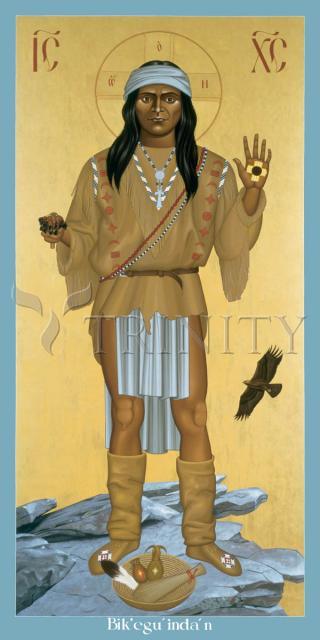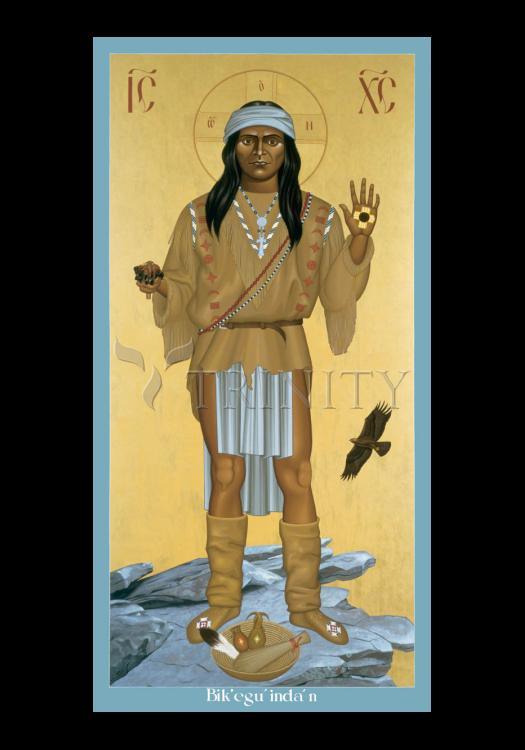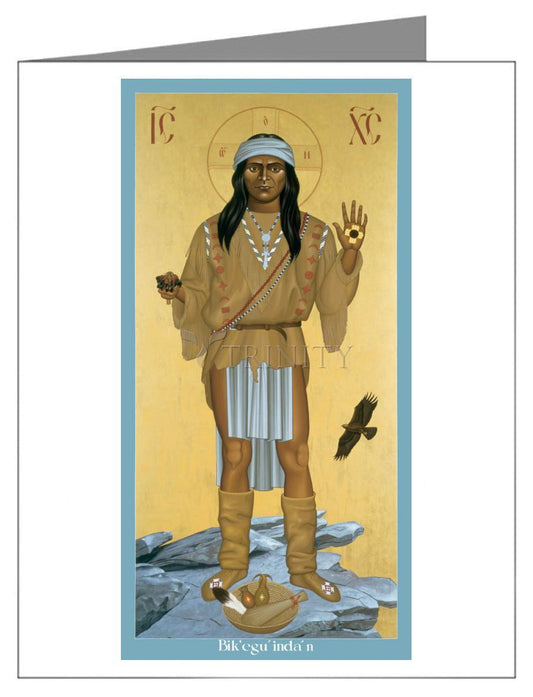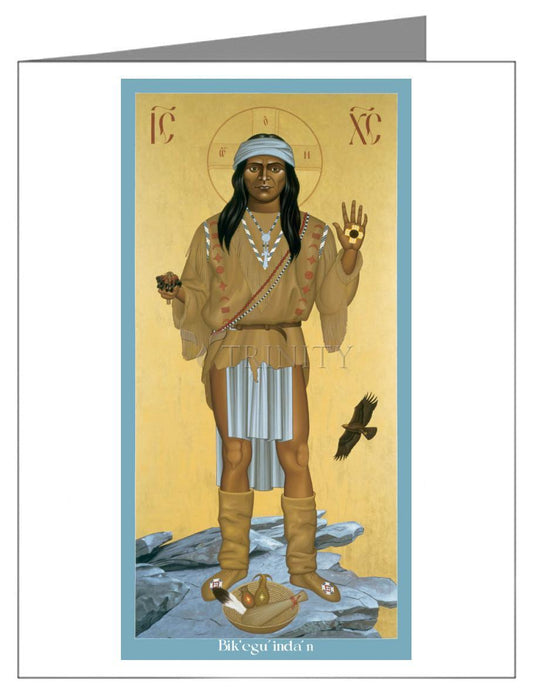Apache Religion:
Once upon a time, long ago, there were people in the United States. Actual people that were here before the white man. They were Native Americans, people whose hearts and souls were one with the land and surrounding nature. Among these people there was a certain group with a very intriguing ethos. These people were the Apache. The Apache people had a unique and well developed society which included every aspect of life that we could possibly think of. Perhaps one of the most interesting aspects of the Apache is their religion, a faith of great spirits and elaborate dances and ceremonies.
This fascinating tribe still exists today, and their religious practices have been questioned and even criticized. However, the Apache people are still strong in their faith and continue to practice their unique religion.
In Apache religion there is one main Creator, Ussen, and then lesser gods. Some of these lesser gods are called ga'ns, and they are protective mountain spirits. They are represented in religious rights like the puberty ceremony for girls. Like many other religions, the Apache religion has a creation story that includes a flood. There are also four sacred colors, black, blue, yellow, and white which have guided the Apaches in their prayer to the Creator. The four colors symbolize the colors of the threads Tarantula used to pull and stretch the earth. During creation, the Creator made the gods, heavens, earth, plants, and animals all from his sweat.
The Apaches have many things that are very important and sacred to them. During their ceremonies the practitioner interacts with his particular power alone. Some other rituals need a priest to officiate. Also, the number four is sacred to them, they sing all their songs and prayers in sets of four. All rites last four nights. Among the Apache people's ceremonies and rituals, there are several dances. These are the rain dance, to promote rainfall, the harvest dance in order to have a plentiful harvest and most fascinating, the unique medicine dance.
The Jicarillas, a group of Apaches, is know for its ceremony of the medicine dance. Today there are no members among the Jicarillas, in active practice, who have the power to heal the sick and perform other miracles that would earn them the title of medicine men or medicine women. Because of this, medicine dances have not been held for several years on the reservation. But in August 1898, such a ceremony was conducted by an old Apache named Sotli.
Since the Jicarilla Apaches live in scattered teepees and cabins over the reservation, there is no specified place where religious ceremonies are performed. Sotli chose a spot in La Jara Canon where Sotli and his friends built a medicine lodge with an enclosure surrounded by a pine brush fence. At noon of the 22nd , about a dozen of the older men gathered in the medicine lodge. No one but Apaches were admitted to the medicine lodge. The ground was cleared at the back of the lodge and covered with a layer of clean gray sand. The sand painting contained the figures of snakes with their heads directed toward the west and the sun symbol which is represented by a ring of white sand drawn around a shallow hole six or eight inches in diameter at the center of the painting.
After the painting was completed, the sick woman, entered the enclosure and passed into the lodge, on the floor of which four "bear tracks" had been made, leading to the dry painting (presumably because she had the snake and bear disease). The patient stepped onto the footprints in going to the sand painting, on which she spread pollen and sacred meal. She then sat down on the painting, facing the east. Songs were sung and prayers were offered to the sun, after which the women brought food from the camps into the enclosure. The people within the lodge seated themselves around the wall and were served by the doorkeeper. After all were served, the doorkeeper gathered a morsel of food from each person and threw it outside the enclosure, as a sacrifice to the sun.
When it became dark in the evening, the men painted snakes in the medicine lodge, where a fire had been built. A young pine tree was placed at the right and another at the left of the sand painting. The patient entered as in the morning, offering pollen and meal, and then seated herself on the painting. A terrifying figure rushed into the semi-darkness of the lodge, lunged toward the patient, but seemed unable to reach her, gave out two or three cries similar to the growl of a bear, and then made his exit. The figure was a man in disguise who had been painted black with charcoal and covered with pine branches.
Since the patient suffered from snake and bear disease, the painting with prayer, meal, and pollen offerings represented snakes and the bear was called upon to drive away the disease. While the bear was in the lodge the singing men yelled at the tops of their voices to scare the bear. The patient fell shaking to the ground. An eagle feather was waved rapidly back and forth above her head. Sotli then placed a live coal in a dish of blue corn meal and allowed the patient to inhale the smoke. This quieted her somewhat as she sat upright but staring just like a drunk. Sotli then handed her the medicine pipe filled with Mexican tobacco. After smoking this, the patient seemed to recover her senses. Three songs concluded the day's ceremony.
One of the most important religious celebrations for the Apaches is their coming of age festival for the young women of the tribe. The Mescalero Apaches celebrate this when the young Apache female has her first period. The festival is a four day event which will bring the young girl into womanhood. The entire tribe gathers to celebrate and a special teepee is constructed and cattail fronds (which are symbolic of renewal) are placed in a carpet for the entrance of her teepee.
Once inside the teepee, she kneels down on clothed pollen-colored buckskin. A "god mother" puts pollen across the cheeks and the nose of the girl and then pushes her towards a tray. On this tray are various sacred ritual objects and the girl walks around the tray four times. Every night, the young girl dances in her teepee until midnight, and outside of her tent the rest of her tribe feasts and celebrates. On the last day the Shaman, with a sun symbol in his palm, blesses her. If the girl submits to the rite, she will, for the rest of her days, be considered a "good woman," and a good wife.
Although we find the religion of the Apaches incredibly interesting and amazing, they have not always been free to practice their religion as they wish. They have, in fact, come into conflict with the United States government on many occasions. Throughout the years the Apache tribe has not only fought for what was rightfully theirs, but had to endure in the twentieth century belittlement of their religion. The U.S. government has not only allowed this to go on but has done nothing to help the Apache tribe. Recently the Supreme Court upheld bans on Indian religious ceremonies using peyote.
Prison officials have prevented Indians from meeting their spiritual advisors or owning any holy artifacts. Things have gone so far as the U.S. Forest Service allowing roads, ski resorts, and a telescope to be built on sacred Indian sites, such as Mt. Graham. On 60 Minutes, correspondent Andy Rooney quoted, "Indians hang onto remembrance of their religion and superstitions that may have been useful to savages 500 years ago, but which are meaningless today." Things have gone as far as two Indians beings fired because they practiced peyote in their religion.
How incredibly unjust America is by guaranteeing prisoners who are Christian religious rights that Native Americans don't have such as, attending prayer meetings, wearing medallions, or reading the Bible. But dawning a headband, or smoking a sacred pipe is not allowed for Native American prisoners or military personnel. Ironically, when the U.S. was at war with Iraq, the U.S. government avoided attacks on Iraq's religious sites. As we can see, the Apaches and other Native Americans have faced many hardships dealing with their faith.
All over the world, people's religion and faith have always played a great part in their lives, and the Apache are no different. However, their unique and fascinating religion has, as we have seen, become very difficult to practice freely. With so many people conforming to a "normal" lifestyle everyday, and the world becoming more and more uniform, the Apache should be able to live and practice their faith as they wish, so that it can grow stronger and be passed down generation to generation.
"”Excerpts from Encarta Encyclopedia, ed. The Apache Culture



